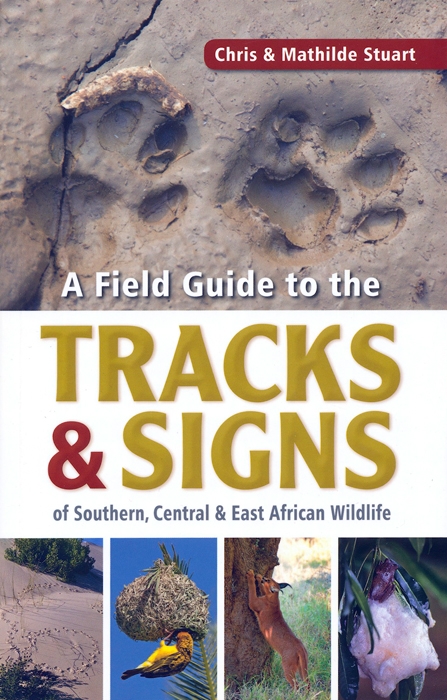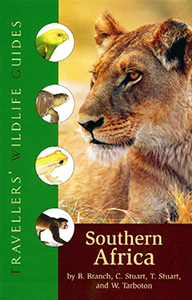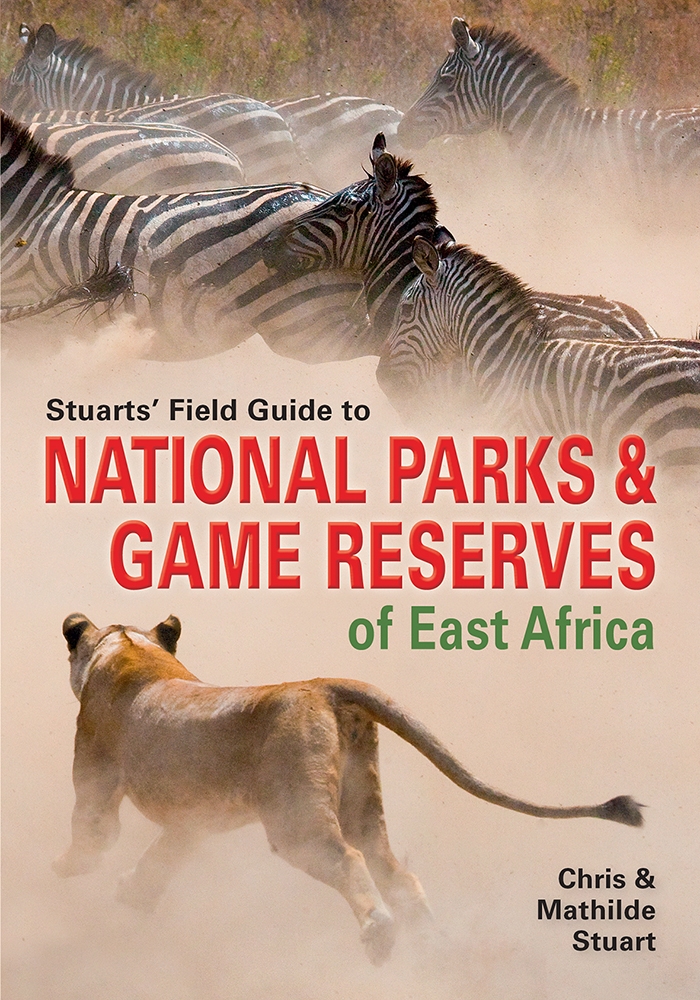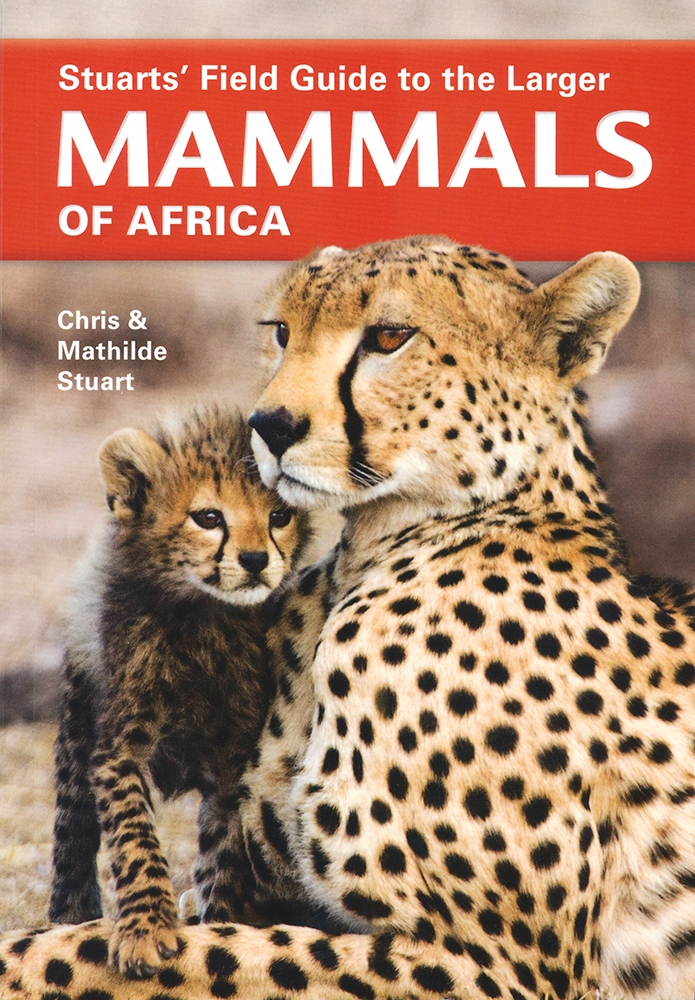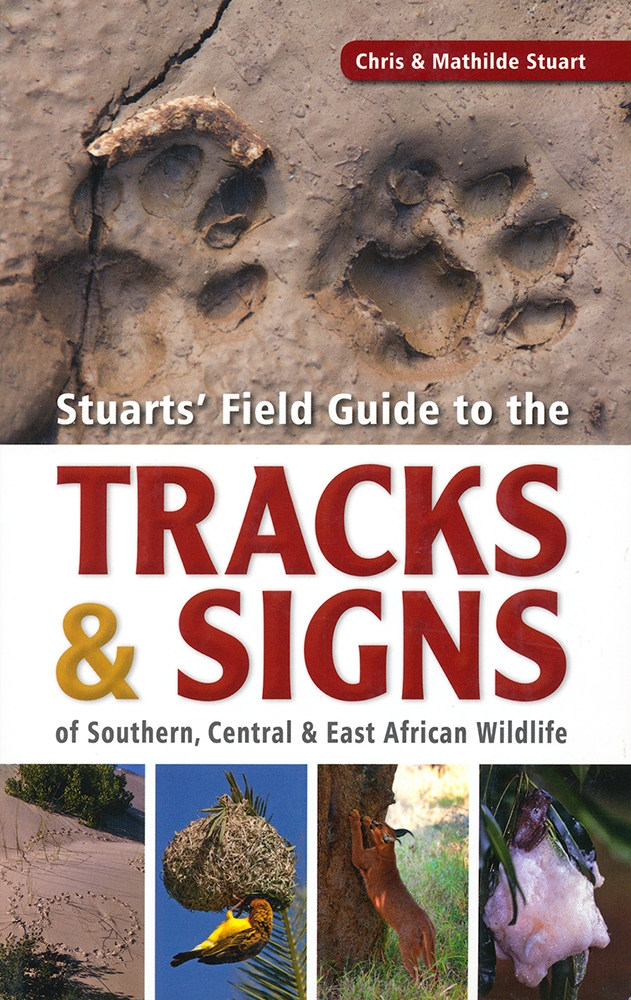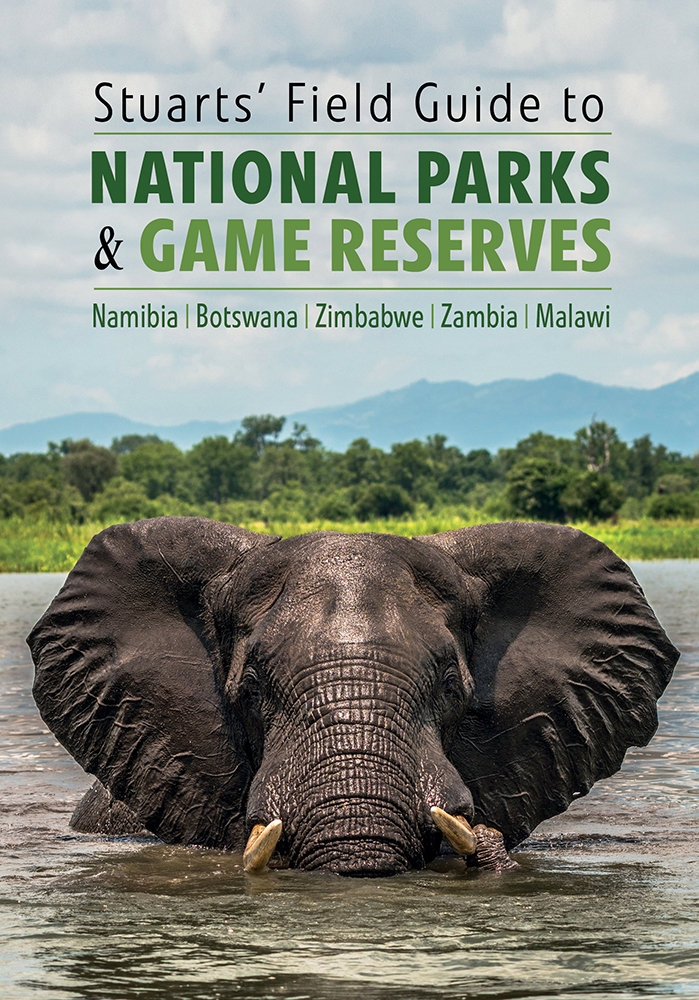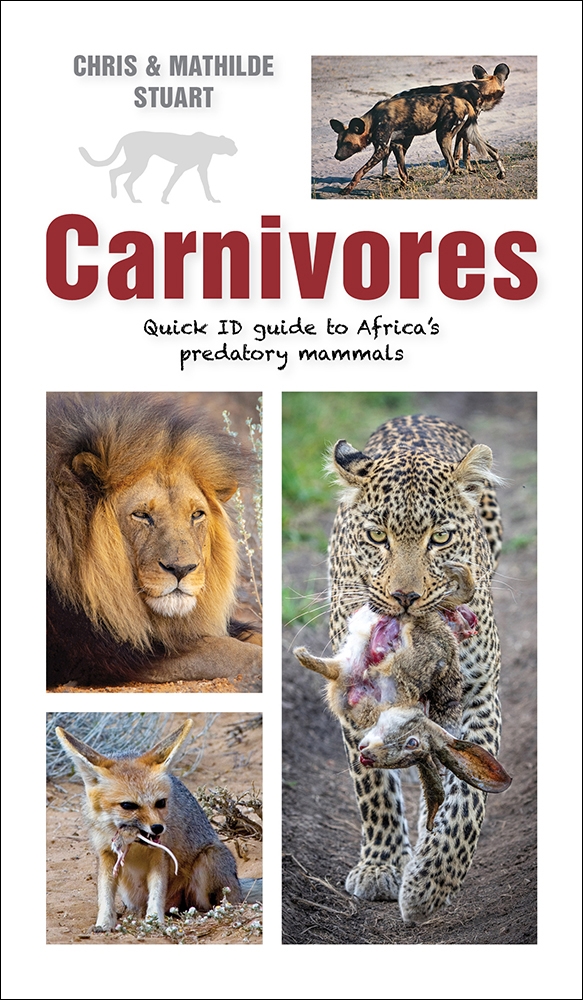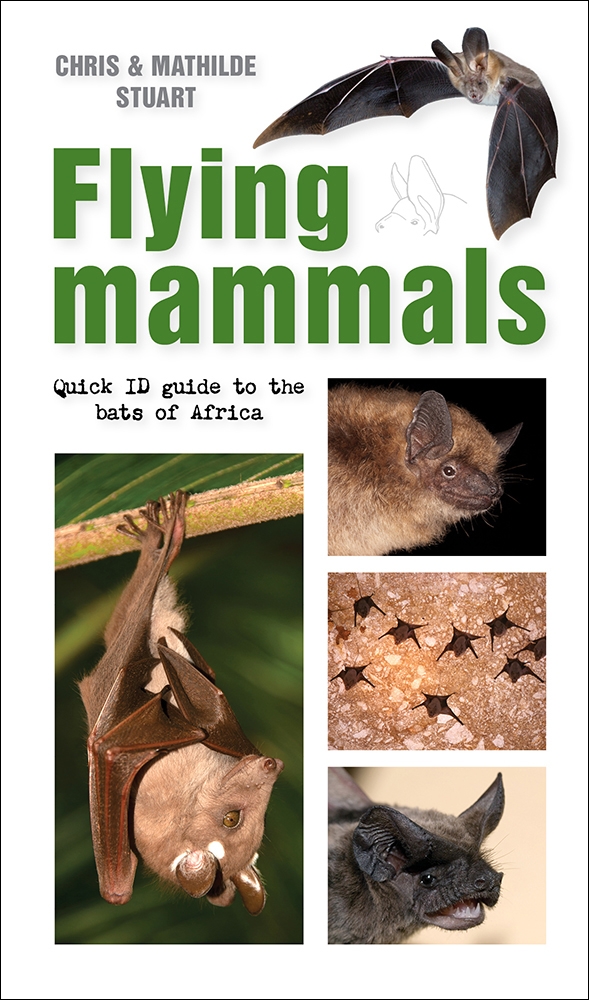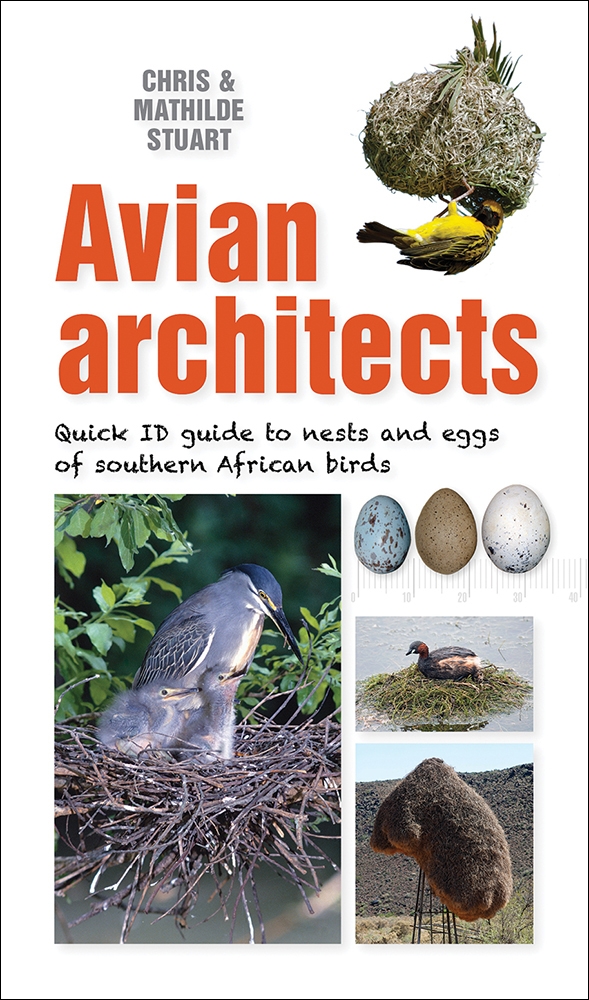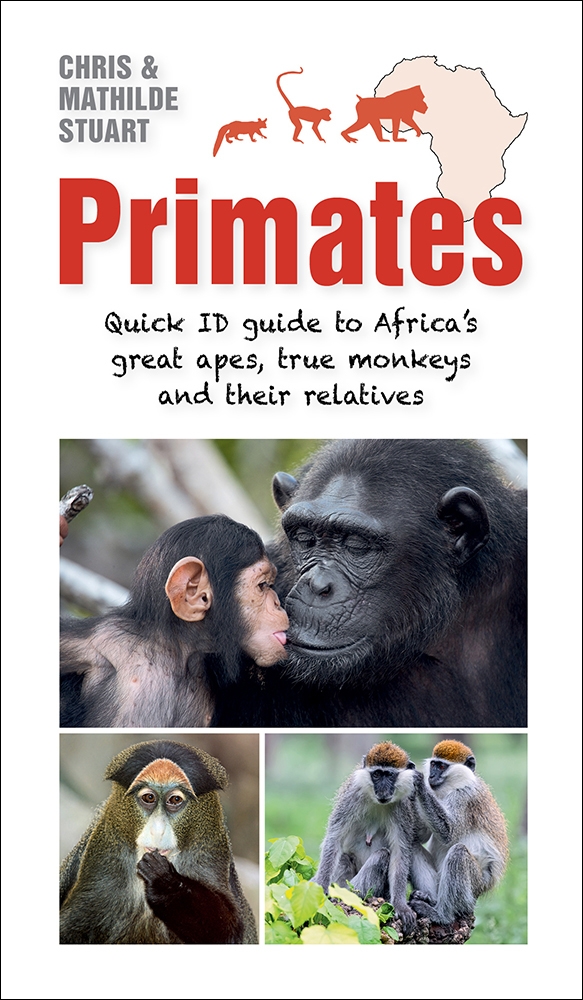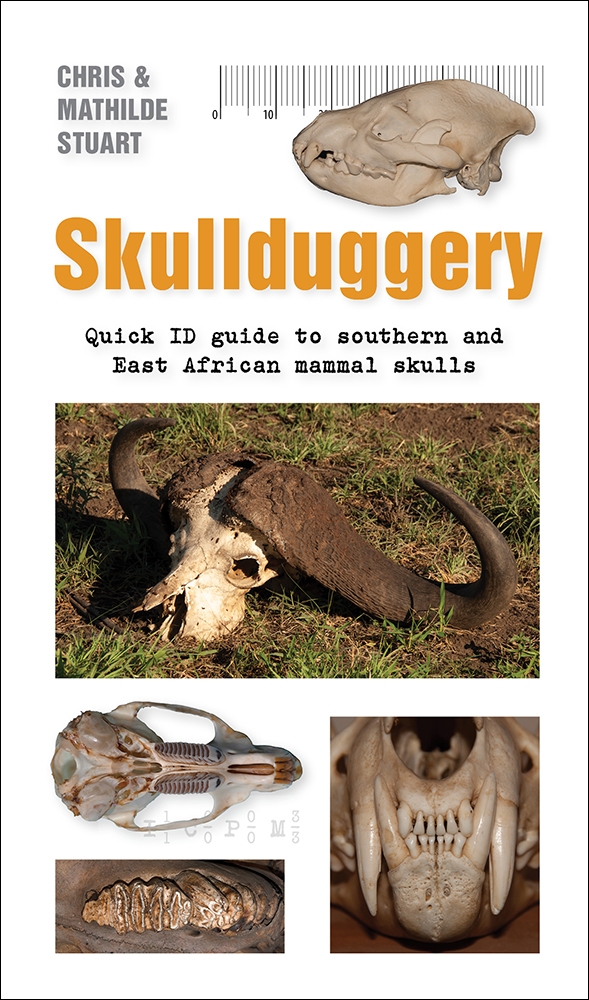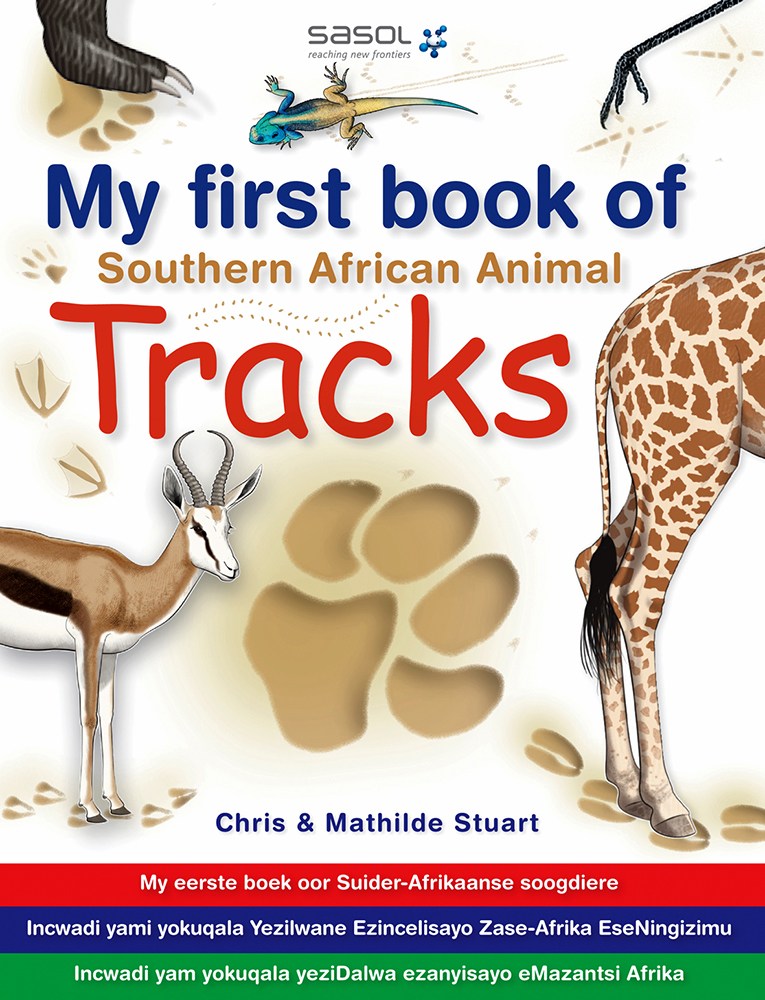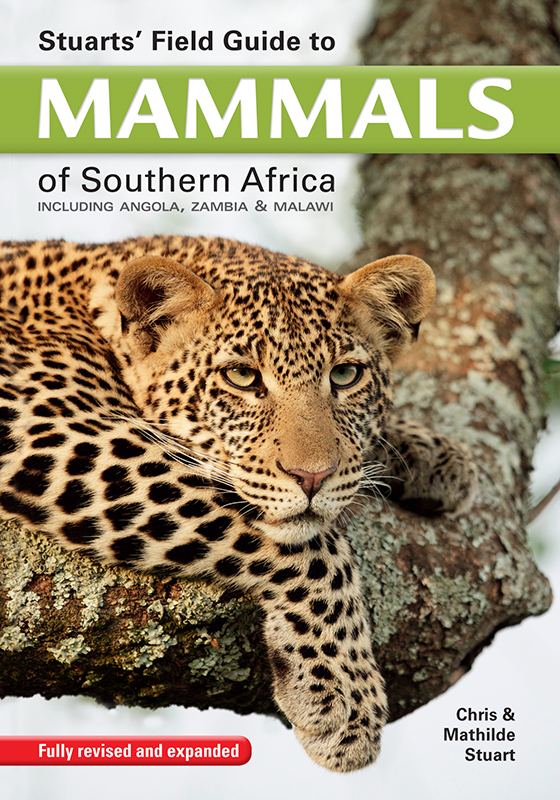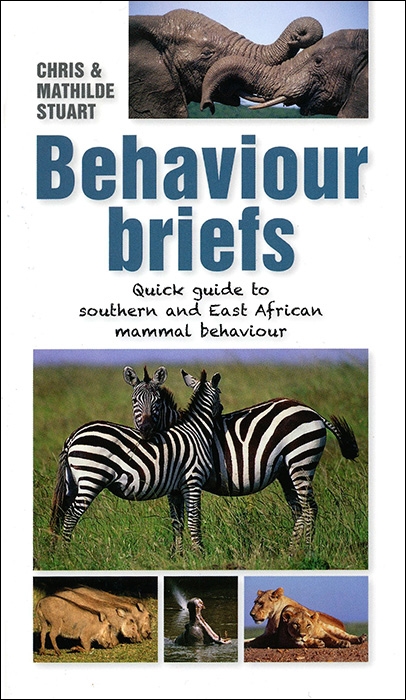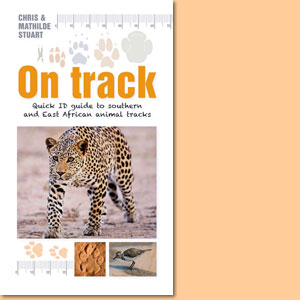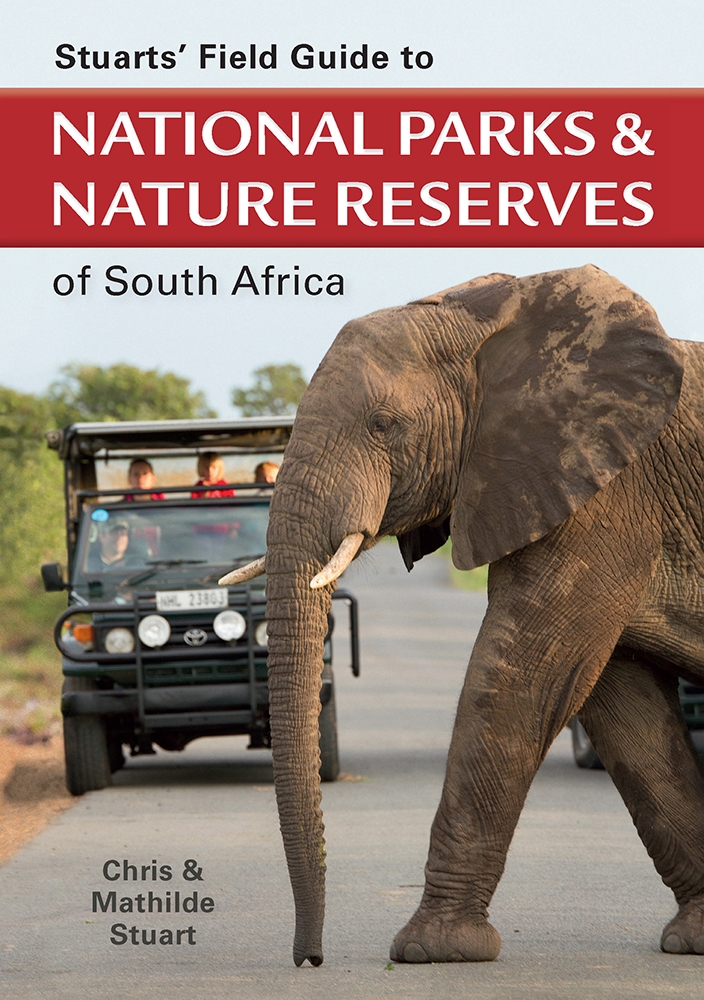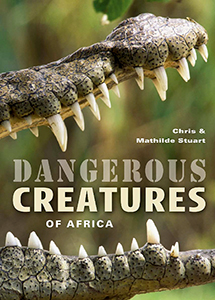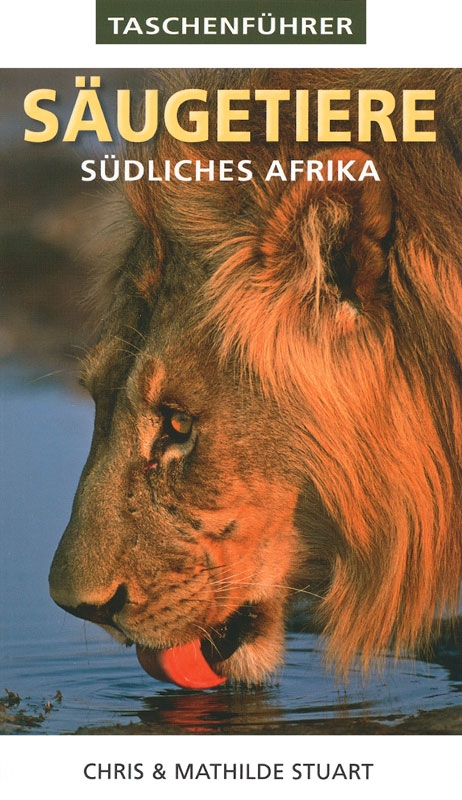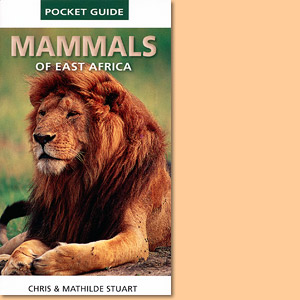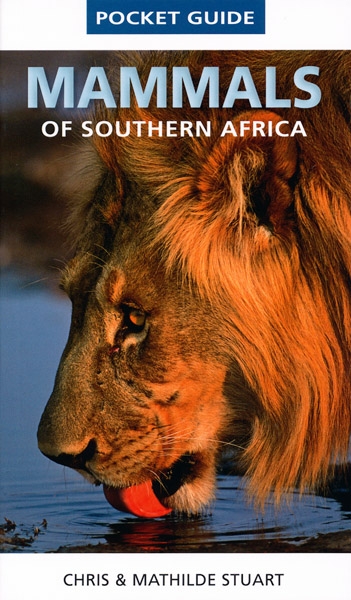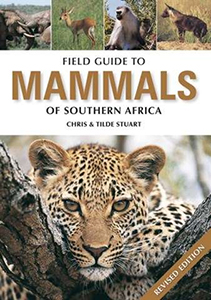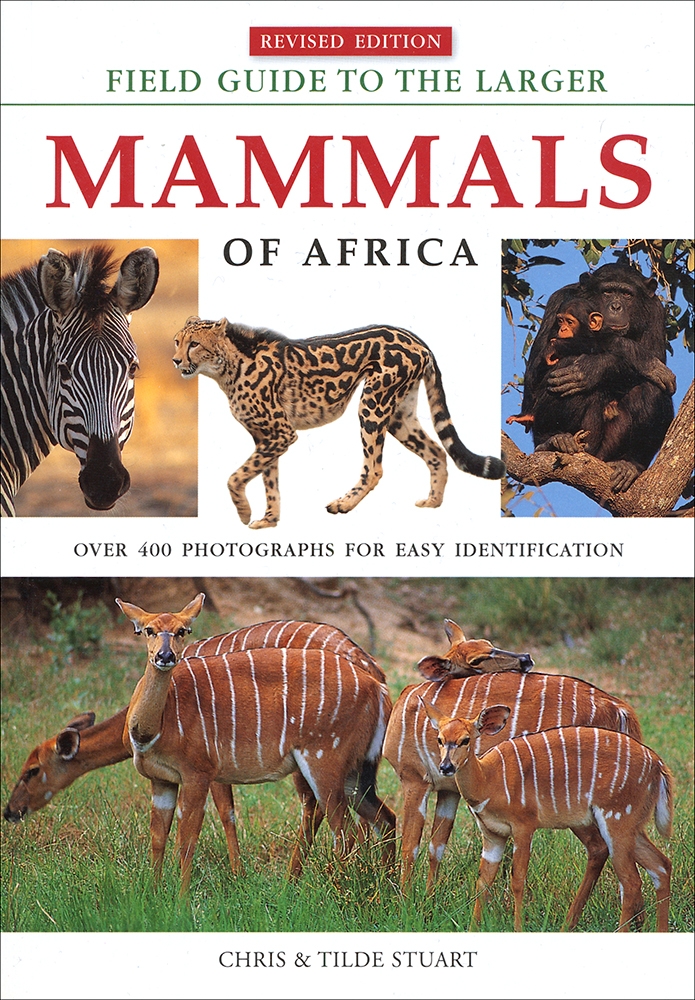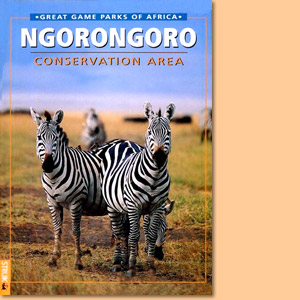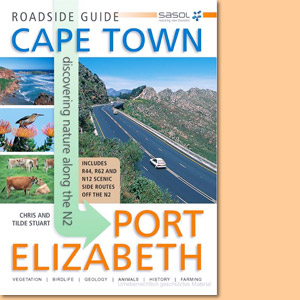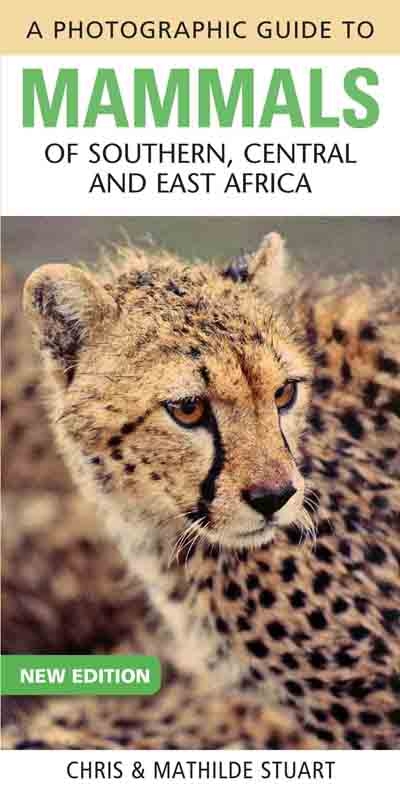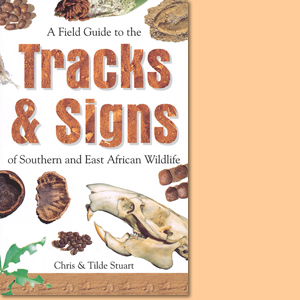A Field Guide to the Tracks & Signs of Southern, Central and East African Wildlife, by Chris and Tilde Stuart
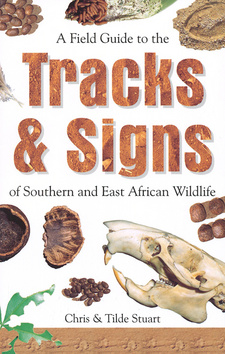
A Field Guide to theTracks & Signs of Southern, Central and East African Wildlife, by Chris and Tilde Stuart. 3rd edition, Cape Town 2001
Chris and Tilde Stuart's book, A Field Guide to theTracks & Signs of Southern, Central and East African Wildlife, is unique in its approach: instead of listing animals, each with its tracks and signs, in taxonomic order, it allows you to look at the track or signs and then, by means of keys, determine the animal group or species responsible for what you see.
How to use this track guide
When you see a track you would like to identify, go to the general tracks key on page 14. From there go to the relevant group key, which will direct you to the species description. There you will also find photographs illustrating the tracks under different conditions. For droppings or dung, go to general droppings key on page 134, which will allow you to determine the group of animals responsible for the droppings. Then read the relevant group description and look at the photographs. If the general droppings key refers you to the antelope, go to antelope dung key on page 138 and check the individual species descriptions and photographs. To identify bird nests, turn to the key on page 209, which will help you determine to which group your nest belongs. If you see other signs such as resting places or feeding signs, you will find some guidance as to the identity of the animals responsible in the relevant chapters, but always look for tracks and dung as well. Tracks differ with living conditions: antelope in sandy areas, for example, may have hoofs longer than usual; tracks in soft sand or mud may be splayed for better purchase. Always remember that the track of the same species can show considerable variation; this may reflect the age composition of a population (young animals leave smaller tracks), individual differences and the influences of the substrate. For example, a track left in firm, damp silt will usually be clear and will accurately portray the animal's foot structure but if the same individual steps on loose sand the chances of reaching identification are greatly reduced. This is why it is always a good idea to follow a trail until you find a clear track. Wherever possible we have included a drawing of the "ideal" track, a photograph of a track taken in the natural state (we have tried to select for what you are most likely to see and not the perfect track) and in some cases the feet themselves where we feel that this may help in reaching a decision on identification. We would like to point out that wherever we have used the feet of animals to illustrate a particular characteristic, none of these animals had been killed specifically to be photographed for this book. Carcasses came from road kills, culling and problem animal control programmes, and predator kills. Apart from the shape and form of a track, the size is obviously very important. We have given average lengths (without the claws where this is applicable) from hundreds of tracks that we have personally measured and if we consider it important we have included additional measurements, such as greatest width, main pad size and claw length. Wherever possible try to measure tracks that are clear and not distorted. We have placed the different types of tracks in broad size categories to convenience and where possible similar-sized species occurring in close association are described together. Once you have your track placed in its size group from the comparative plate, turn to the photographs and drawings and take note of the other factors that may aid you in reaching identification. [...]
This is an excerpt from the guide: A Field Guide to theTracks & Signs of Southern, Central and East African Wildlife, by Chris and Tilde Stuart.
Title: Field Guide to Tracks and Signs of Southern and East African Wildlife
Authors: Chris Stuart; Tilde Stuart
Struik Publishers
3rd edition, Cape Town 2001
ISBN 9781868725588 / ISBN 978-1-86872-558-8
Softcover, 14x21 cm, 310 pages, numerous bw- and colour photos and illustrations
Stuart, Chris und Stuart, Tilde im Namibiana-Buchangebot
A Field Guide to the Tracks & Signs of Southern, Central and East African Wildlife
Latest edition of A Field Guide to the Tracks & Signs of Southern, Central and East African Wildlife.
Traveller's Wildlife Guide Southern Africa
Traveller's Wildlife Guide Southern Africa introduces 500 of Southern Africa’s most common amphibians, reptiles, birds, and mammals.
Stuart's Field Guide to National Parks and Game Reserves of East Africa
Stuart's Field Guide to National Parks and Game Reserves of East Africa provides an overview of some 58 protected areas across East Africa.
Stuarts’ Field Guide to the Larger Mammals of Africa
Stuarts’ Field Guide to the Larger Mammals of Africa concentrates on the more visible and easily distinguished larger species.
Stuarts' Field Guide to the Tracks & Signs of Southern, Central and East African Wildlife
Stuarts' Field Guide to the Tracks & Signs of Southern, Central and East African Wildlife, this is the 5th revised edition.
Stuarts' Field Guide to National Parks and Nature Reserves of Namibia, Botswana, Zimbabwe and Zambia
Stuarts' Field Guide to National Parks and Nature Reserves of Namibia, Botswana, Zimbabwe and Zambia.
Carnivores: Quick ID guide to Africa's predatory mammals
Carnivores: Quick ID guide is a compact and quick ID identification guide to Africa's predatory mammals.
Flying Mammals Quick ID guide to the bats of Africa
Flying Mammals Quick ID is a compact and quick ID identification guide to the bats of Africa.
Avian Architects: Quick ID guide to nests and eggs of southern African birds
Avian Architects: Quick ID is a compact and quick ID identification guide to nests and eggs of southern African birds.
Primates: Quick ID guide to Africa's great apes, true monkeys and their relatives
Primates Quick ID is a compact and quick ID identification guide to Africa's great apes, true monkeys and their relatives.
Skullduggery: Quick ID guide to southern and East African mammal skulls
Skullduggery is a compact and quick ID identification guide to skulls of southern and East African mammals.
My first book of Southern African animal tracks
My first book of Southern African Animal Tracks introduces 55 different types of animals and their footprints.
Stuarts' Field Guide to Mammals of Southern Africa
Stuart's Field Guide to Mammals of Southern Africa covers near to 400 mammal species including Angola, Zambia and Malawi since the 5th edition of 2015.
Behaviour briefs: Quick guide to southern and East African animal behaviour
Why do they do that and what next? Behaviour briefs is a quick guide to southern and East African animal behaviour.
On Track: Quick ID Guide to Southern and East African Animal Tracks
On Track is a quick identification guide to tracks of Southern and East African most commonly found mammals, reptiles, rodents, birds and insects.
Stuarts' Field Guide to National Parks and Nature Reserves of South Africa
Stuarts' Field Guide to National Parks and Nature Reserves of South Africa offers a comprehensive overview of 43 parks, reserves and wilderness areas.
Dangerous creatures of Africa
The focus of Dangerous creatures of Africa is on understanding, identifying, avoiding and surviving these potential hazards of the African wilds.
Taschenführer: Säugetiere, Südliches Afrika
Der Taschenführer Säugetiere: Südliches Afrika, legt seinen Schwerpunkt auf die größeren, öfter gesehenen Tierarten, schließt allerdings auch einige ungewöhnliche Arten ein.
Mammals Of East Africa Pocket Guide
Mammals Of East Africa Pocket Guide covers all of the common and some of the less common mammal species.
Mammals of Southern Africa Pocket Guide
Authoritative and colourfully illustrated, Mammals of Southern Africa Pocket Guide offers concise information.
Field Guide to Mammals of Southern Africa
A total of 337 species are covered in this fully revised comprehensive field guide to mammals of Southern Africa.
Field Guide to the Larger Mammals of Africa
Field Guide to the Larger Mammals of Africa provides over 400 colour photos, with concise, pertinent information highlighting the diagnostic features of each species.
Ngorongoro Conservation Area
From the series 'Great Game Parks of Africa' this is a portrait of the Ngorongoro Conservation Area.
Sasol Roadside Guide. Cape Town-Port Elizabeth: Discovering Nature Along the N2
The Sasol Roadside Guide Cape Town-Port Elizabeth: Discovering Nature Along the N2 interprets the surrounding countryside - plants, birds, mammals, reptiles, agriculture, geology.
A Photographic Guide to Mammals of Southern, Central and East Africa
A Photographic Guide to Mammals of Southern, Central and East Africa introduces 152 mammal species of each family group.
Field Guide to Tracks and Signs of Southern and East African Wildlife
Related to Southern African and East African Wildlife, this great field guide is about their tracks and signs, like droppings, feeding signs, scent marks and others.

